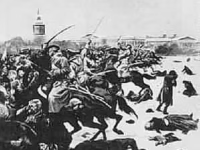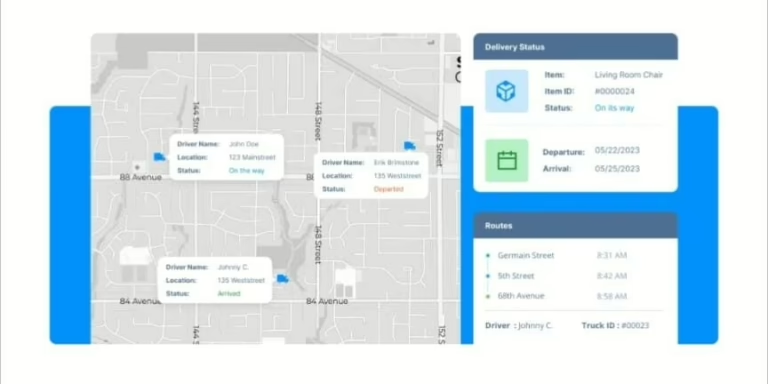The rise of e-commerce, on-demand services, and customer expectations for same-day delivery have made last-mile delivery software a critical part of modern logistics. The “last mile,” the final journey from a distribution hub to the customer’s doorstep, is often the most complex and expensive stage of the supply chain. Businesses that fail to manage it effectively risk higher costs, operational inefficiencies, and dissatisfied customers. This blog explores what last mile delivery software is, why it matters, its key features and benefits, and how solutions like CigoTracker can help companies deliver faster, smarter, and more reliably.
What Is Last Mile Delivery Software, and Why Does It Matter?
At its core, last mile delivery software is a digital platform that helps businesses plan, manage, and optimize deliveries from local depots to end customers. It integrates route planning, driver management, real-time tracking, proof of delivery, and analytics to streamline operations.
The last mile is challenging for several reasons:
- High cost—It accounts for over 50% of total shipping expenses.
- Uncertainty—Traffic congestion, failed deliveries, and delays are common.
- Customer demands—Buyers now expect transparency, accurate ETAs, and real-time notifications.
By using last-mile delivery software, companies can gain visibility, reduce costs, and deliver a better customer experience.
Key Features of Last Mile Delivery Software
When choosing a solution, businesses should ensure it includes the following features:
1. Route Optimization
Efficient route planning is the heart of last-mile delivery software. Smart algorithms consider traffic, time windows, and capacity to reduce fuel costs and delivery times.
2. Real-Time Tracking
Live GPS tracking gives businesses visibility into driver locations, while customers get updates and accurate ETAs. This transparency builds trust and reduces support calls.
3. Proof of Delivery (POD)
Features like e-signatures, photos, or QR scans ensure deliveries are confirmed securely and disputes are minimized.
4. Automated Dispatch
Instead of manual assignments, the system can auto-allocate tasks to drivers based on proximity, priority, or availability.
5. Analytics & Reporting
Dashboards track KPIs like on-time delivery rates, driver performance, and route efficiency, enabling continuous improvement.
6. Mobile Driver App
Drivers can view routes, update delivery status, and capture POD directly through a user-friendly app.
7. Exception Management
Delays, cancellations, or failed attempts are flagged in real time, allowing teams to respond proactively.
Benefits of Using Last Mile Delivery Software
Businesses that adopt last-mile delivery software see improvements across multiple areas:
- Reduced costs: Optimized routes lower fuel and labor expenses.
- Higher efficiency: Automated dispatch and workflows save time.
- Happier customers: Real-time notifications and reliable ETAs improve satisfaction.
- Data-driven decisions: Analytics reveal gaps and guide better planning.
- Scalability: Companies can handle growing delivery volumes without proportional cost increases.
CigoTracker: A Powerful Last Mile Delivery Software
CigoTracker offers a comprehensive last-mile management solution tailored for businesses that want efficiency, visibility, and customer satisfaction.
Why CigoTracker Stands Out:
- Smart Route Planning: Delivers optimized routes to reduce mileage and costs.
- Live Tracking: Both customers and dispatchers get real-time delivery updates.
- Driver App: Provides navigation, instant updates, and proof of delivery tools.
- Automated Workflows: Minimizes manual errors by streamlining dispatching and notifications.
- Performance Insights: Detailed analytics to monitor on-time rates, driver efficiency, and overall fleet productivity.
With features like these, CigoTracker ensures businesses achieve on-time deliveries, reduce costs, and keep customers informed at every step.
Best Practices for Implementing Last Mile Delivery Software
To maximize results, businesses should follow these practices:
- Start Small: Test the system in one region before scaling.
- Clean Data: Ensure accurate addresses and customer details to avoid routing errors.
- Train Drivers: Familiarize staff with mobile apps and new workflows.
- Integrate Systems: Connect the software with your order or warehouse management tools for seamless operations.
- Monitor Analytics: Use data insights to refine routes and improve performance over time.
Future of Last Mile Delivery Software
Technology is evolving rapidly, and last-mile delivery software will continue to play a major role in logistics transformation. Future trends include:
- AI-Powered Predictions: Smarter algorithms will adjust routes in real time.
- Green Logistics: Route planning will consider fuel efficiency and emissions reduction.
- Autonomous Delivery: Drones and robots may handle short-distance deliveries.
- Micro-Fulfillment: Local hubs will shorten delivery distances, supported by advanced software coordination.
These innovations will make last-mile delivery more efficient, sustainable, and customer-centric.
Conclusion
The last mile may be the shortest leg of the supply chain, but it’s the most crucial. With customer expectations at an all-time high, businesses cannot afford inefficiencies, delays, or poor visibility. Last mile delivery software empowers companies to streamline operations, reduce costs, and deliver exceptional customer experiences. Solutions like Cigo Tracker are already helping businesses achieve higher efficiency, stronger customer trust, and long-term growth. For companies aiming to stay competitive in the digital age, adopting last-mile delivery software is not just an option; it’s a necessity.



















